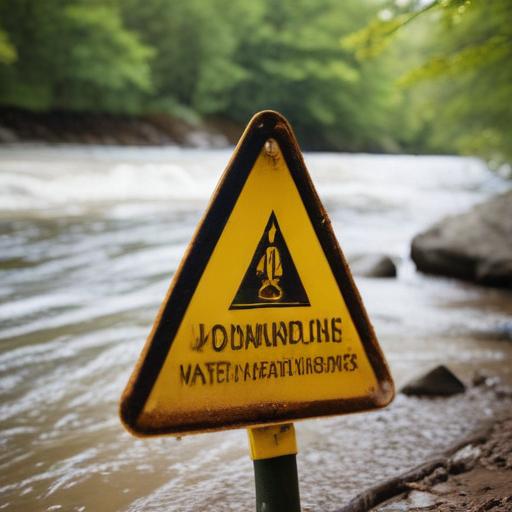As mid-spring unfolds, rivers and streams across California are experiencing elevated and frigid water flows prompted by snowmelt. This seasonal change presents significant hazards to outdoor enthusiasts, with swiftly moving and cold water posing serious risks.
Pacific Gas and Electric Company (PG&E) is urging individuals near rivers and streams to exercise heightened caution, particularly around hydroelectric facilities and dams where water flow can shift rapidly. Dave Gabbard, PG&E’s Vice President of Power Generation, emphasizes the importance of awareness in these conditions: “The melting snowpack is creating cold, higher flows. We encourage everyone recreating in or near water to be situationally aware and have a plan to quickly and safely escape in case of changing water flows and cold temperatures.”
California’s rivers, predominantly fed by snowmelt, remain cold even during summer months. Acknowledging the dangers is vital; recognizing when water is too cold or swift, adhering to personal limits, and using life jackets are essential safety measures.
To ensure safety while enjoying outdoor water activities, PG&E shares several water safety tips:
1. **Know the Risks**: Drowning prevention is paramount. Struggling in water can lead to a rescue attempt that endangers both the individual and the rescuer. Cold water immersion can provoke a “gasp reflex,” leading to inhalation of water, hypothermia, or drowning, while also potentially overwhelming even the strongest swimmers.
2. **Learn Self-Rescue Techniques**: If falling into cold water, remain calm to control breathing and reduce the likelihood of drowning. Staying with a boat can enhance visibility and buoyancy, while using floating aids such as cushions can make self-rescue more manageable.
3. **Understand Your Limits**: Swimming in natural bodies of water can be significantly more challenging than in a pool due to fatigue and unseen obstacles. As waters rise during snowmelt, these dangers increase. Guided excursions are recommended for those less experienced with paddling.
4. **Wear a Coast Guard-Approved Life Jacket**: Unpredictable conditions in open water mean even skilled swimmers can face difficulties.
5. **Adult Supervision**: It is crucial to maintain vigilant supervision of children in and around water, avoiding assumptions that others are watching. Rotate responsibilities among adults and utilize the buddy system to prevent swimming alone.
These guidelines serve to increase awareness and promote safety during this period of heightened water activity. With proper precautions, outdoor enthusiasts can enjoy the beauty of California’s waterways while minimizing risks. Engaging with nature safely not only enhances personal experiences but also fosters a greater appreciation for the environment.
